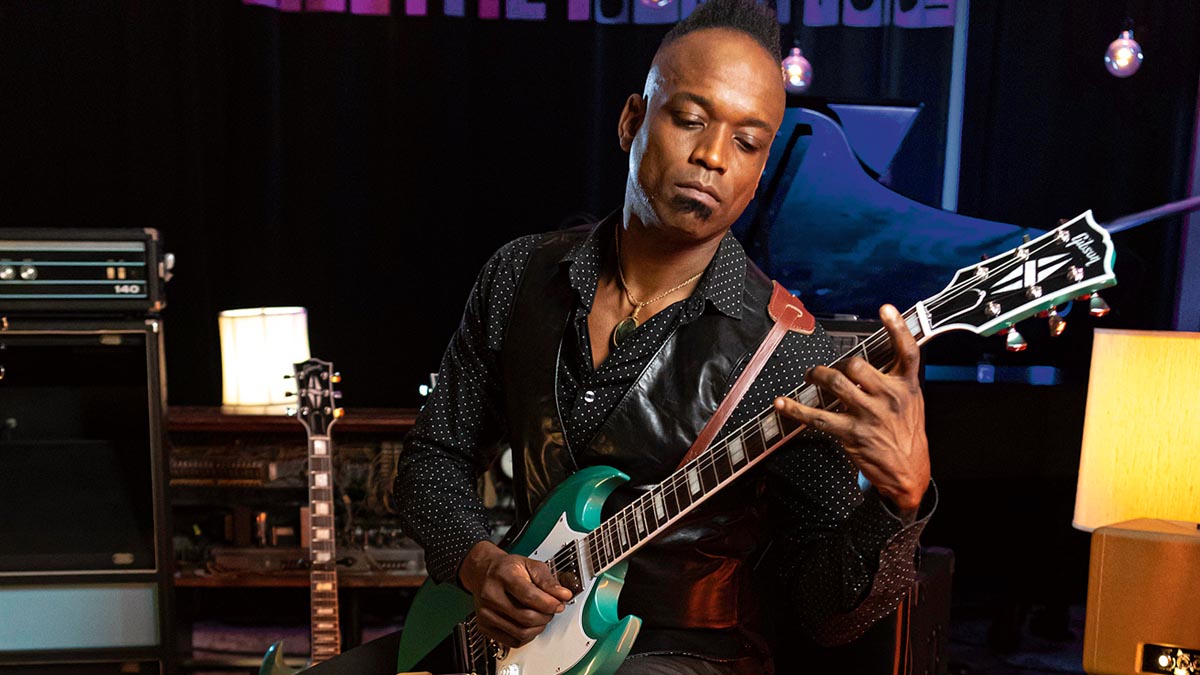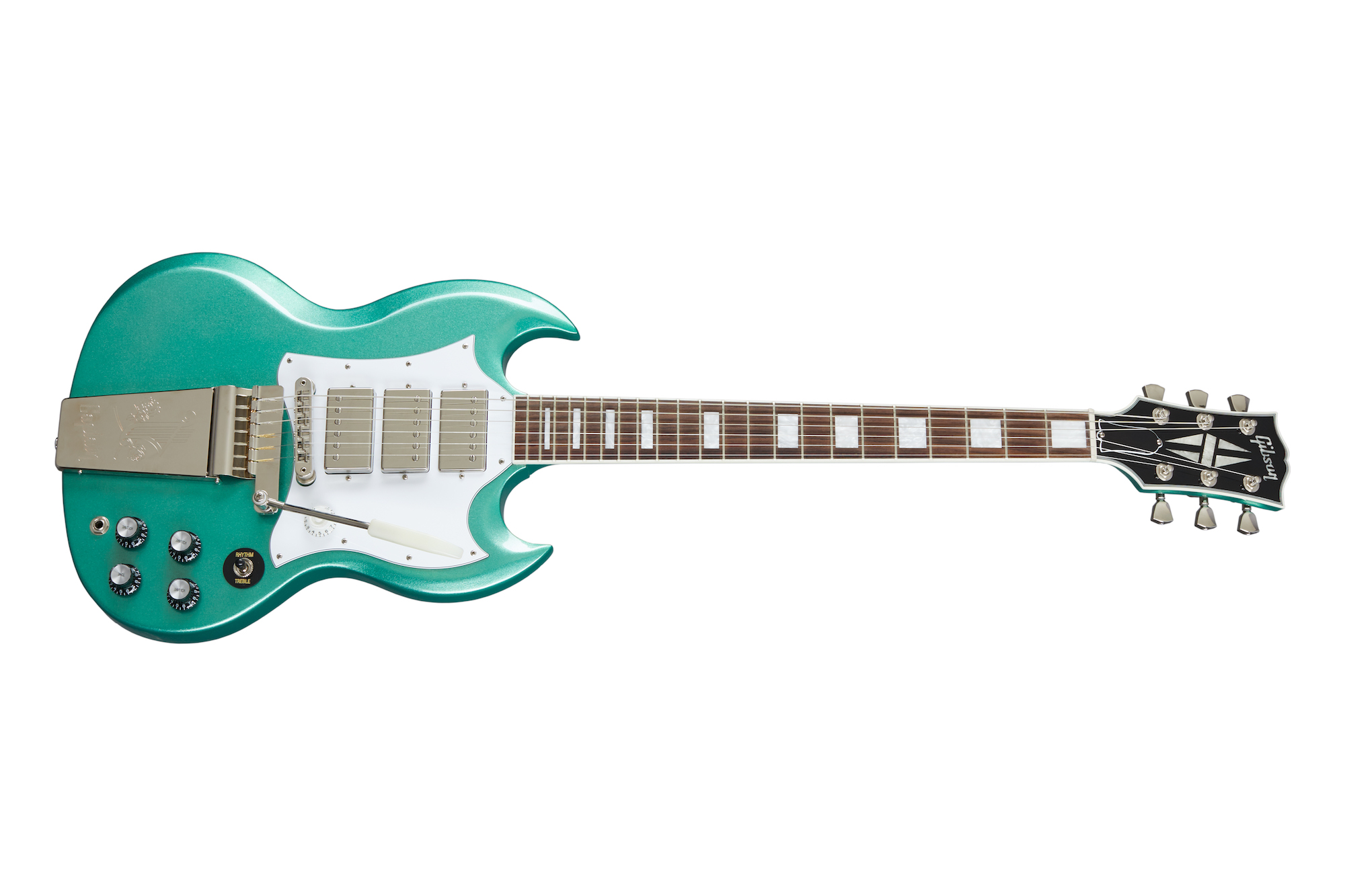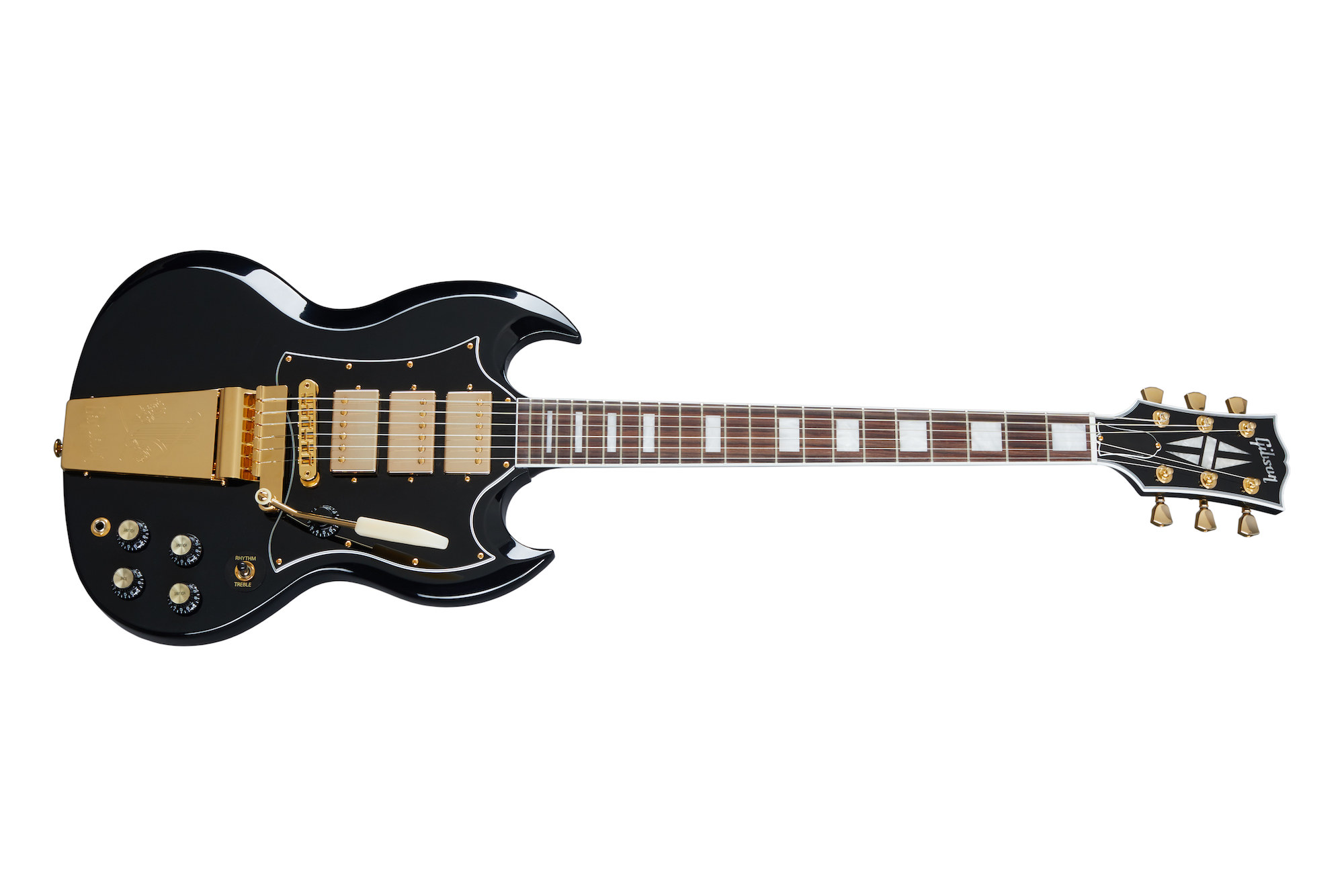Kirk Douglas: “I wanted to give other like-minded players the ability to use an SG in a way they haven’t been able to before“
The Roots guitarist's new signature Gibson might just be the most versatile SG yet. He walks us through its many features...

‘Captain’ Kirk Douglas is best known for his blazing fretboard work in “hip-hop organic jazz” collective The Roots.
As house band for The Tonight Show Starring Jimmy Fallon, The Roots’ stylistic dexterity and dynamic flair demand Kirk pull out all the stops when it comes to tonal versatility – an approach strongly reflected in the design of his new triple-humbucker signature SG.
“Those are BurstBuckers,” Kirk tells us. “My original [signature SG] from 2013 had ’57 Classics, but I was inspired by the sound of my Rich Robinson ES-335; the BurstBuckers in that guitar sound really good through my 100-watt Marshall head. That was my main inspiration for going with BurstBuckers this time around.”
When Gibson approached Kirk about collaborating on another signature SG model, he was hesitant at first, believing there wasn’t a great deal of new features he could bring to the table.
“But then I realised how cool it would be to give other like-minded players the ability to use an SG in a way they haven’t been able to before,” he recalls.
“For example, I realised that some of the things I do on stage with The Roots are built around my use of volume swell, and I had a volume pot installed close to where my picking hand would be on the SG.”

In addition to this master volume knob mounted within easy reach on the pickguard, each of the Kirk Douglas Signature SG’s three BurstBucker pickups sports an independent volume control, enabling any combination to be dialled in.
Get The Pick Newsletter
All the latest guitar news, interviews, lessons, reviews, deals and more, direct to your inbox!
“People can blend their own recipe with the pickups,” continues Kirk, “and the global volume knob allows you to manipulate that, whether it’s to just turn everything down, or to create swells. If you’re playing live and your amp is noisy, the cool thing about having the [master] volume pot right next to your hand is you can immediately shut that shit down, which can come in handy. For live situations, it’s more reactive to your immediate needs.
“The different pickup combinations are also really fun to explore in the studio when you’re paying close attention to how the guitar tone fits the part you’re recording,” he continues.
“And each pickup has its own push-pull volume knob, so you’re able to get a [coil-split] single-coil sound. I thought it was necessary to have push-pull [pots] because if you’re playing an amp that is running kind of hot, sometimes a humbucker is just too much guitar – too much sound.
“I can get a Tele type of tone for rhythm sounds, which is incredibly useful. I love the sound of a Tele lead pickup and to have an SG that can cover that is really valuable to me for certain songs.“
“The middle pickup really nails that cool in-between Strat tone when combined with the Rhythm [neck] or Lead [bridge] pickup. The volume for the middle pickup is located where the tone for the Rhythm pickup would normally be. I only use the middle pickup occasionally, so most of the time, the middle pickup volume is rolled right down.
“The pickup selector switch operates like any standard Les Paul or SG: the middle position engages your Rhythm and Lead pickups, all the way down engages your Lead pickup, and up engages your Rhythm [pickup].

“The only way to involve the middle pickup in the equation is to roll its volume in with the knob – which is located above the tone control of the guitar. You have one [master] tone knob on the guitar, but I don’t tend to use the individual tone knobs much. And that’s really it. It’s kind of basic, but it’s logical.
“All these things we talk about like volume controls and pickup selection are great; you can have the same tool but use it in totally different ways. That’s what makes the whole thing fun. At the end of the day, it’s supposed to be fun. It’s about engagement with the audience and engagement with yourself – making it enjoyable for you and making a joyful noise.”
Rod Brakes is a music journalist with an expertise in guitars. Having spent many years at the coalface as a guitar dealer and tech, Rod's more recent work as a writer covering artists, industry pros and gear includes contributions for leading publications and websites such as Guitarist, Total Guitar, Guitar World, Guitar Player and MusicRadar in addition to specialist music books, blogs and social media. He is also a lifelong musician.
Guitar World Discussion: Who is the most underrated guitar player of all time?
Ozzy Osbourne’s solo band has long been a proving ground for metal’s most outstanding players. From Randy Rhoads to Zakk Wylde, via Brad Gillis and Gus G, here are all the players – and nearly players – in the Osbourne saga











